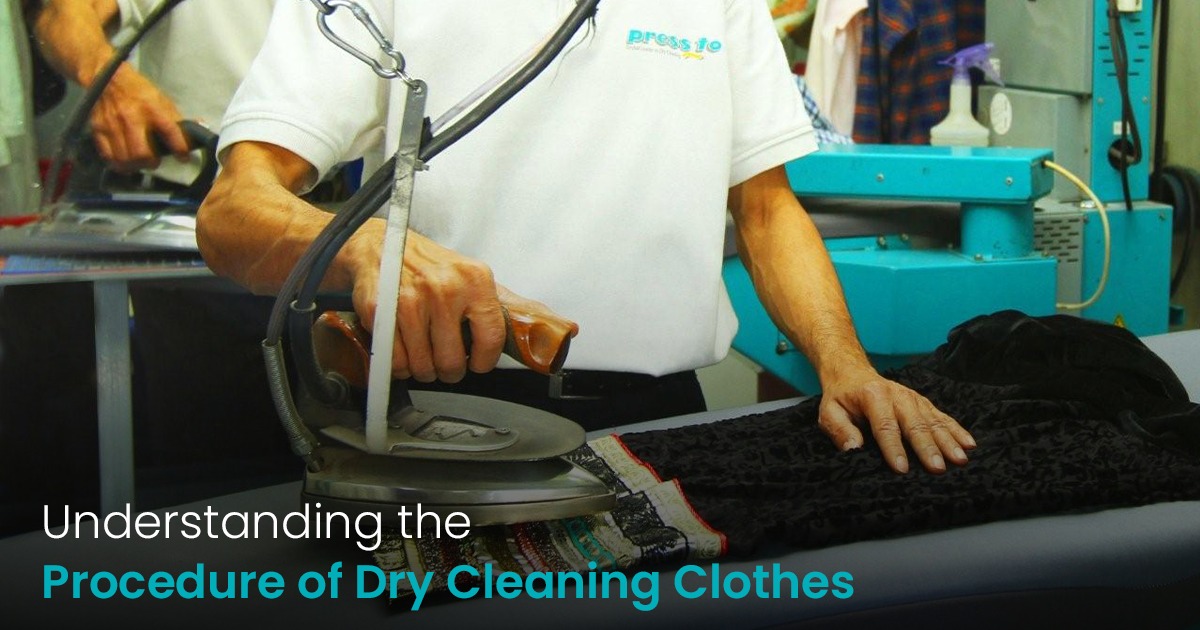
May 21, 2024
Understanding the Procedure of Dry Cleaning Clothes
Dry Cleaning is a specialized cleaning process used to clean delicate or sensitive fabrics that cannot withstand the harsh agitation and water immersion of traditional washing methods. It's a method of cleaning clothes using a solvent rather than water. Here's an overview of the dry-cleaning process:Here's an Overview of the Dry-Cleaning Process:
- Item Inspection and Tagging: When you bring your garments to a dry cleaner, they are usually inspected for stains, tears, missing buttons, or other issues. They might also tag the clothes with labels to ensure proper identification throughout the process.
- Pre-Treatment: Stains and spots are pre-treated before the actual dry-cleaning process. Different solvents or spotting agents are used depending on the type of stain (e.g., oil-based, protein-based, etc.).
- Loading the Machine: The pre-treated garments are placed in a large dry-cleaning machine. These machines are designed to hold clothes without causing damage. The machine looks similar to a regular washing machine but operates quite differently.
- Cleaning Solvent: A solvent, often perchloroethylene (perc), is used instead of water to clean the garments. The machine fills with the solvent, and the clothes tumble in the solvent. The solvent dissolves and removes the dirt, oils, and other contaminants from the clothes.
- Filtration and Distillation: After the cleaning cycle, the solvent goes through a filtration process to remove dirt and particles. Then, the solvent is distilled to remove any remaining impurities and to reclaim and recycle the solvent for future use.
- Drying: The machine's drum rotates to remove most of the solvent from the clothes. Some machines also use warm air to speed up the drying process. The remaining solvent is evaporated, leaving the clothes almost dry.
- Post-Spotting and Finishing: After drying, garments are checked again for any remaining stains. If needed, additional spot treatment is done. Then, the clothes are pressed and finished to restore their shape and appearance. Steam and specialized pressing equipment are used for this purpose.
- Quality Check: The garments undergo a final inspection to ensure they meet the desired level of cleanliness and appearance.
- Packaging and Return: Once the clothes pass the inspection, they are typically packaged using protective covers or hangers to prevent wrinkles and dirt. They're then ready for customer pickup or delivery.
Here are Some Guidelines to Help You Determine How Often To Dry Clean a Suit:
- Frequency of Wear: If you wear a suit regularly to work or events, you can typically get away with dry cleaning it less often. Suits made from high-quality materials are designed to be durable and can withstand several wears before needing cleaning.
- Visible Stains and Odors: If your suit has visible stains or odors, it's a good indication that it needs cleaning. Stains can set into the fabric over time, so it's best to address them sooner rather than later.
- Light Cleaning Alternatives: Instead of frequent dry cleaning, you can use light cleaning methods to maintain your suit's freshness. Hanging the suit in a well-ventilated area after wear, using a clothes brush to remove surface dust and debris, and spot-cleaning small stains can help extend the time between dry cleanings.
- Rotation: If you have multiple suits in your wardrobe, rotating them can help reduce the frequency of dry cleaning. This allows each suit to rest between wears and helps to maintain its shape and fabric quality.
- Environment: If you work in a clean office environment and wear a dress shirt underneath your suit, the suit might not get as dirty as it would in more rugged settings. In such cases, you might need to dry clean less often.
- Special Occasions: Suits worn to special occasions, such as weddings or formal events, might need cleaning after a single wear to ensure they look their best.
- Professional Opinion: Consulting with a reputable dry cleaner can provide personalized advice based on your suit's fabric, your wearing habits, and the specific care instructions provided by the manufacturer.